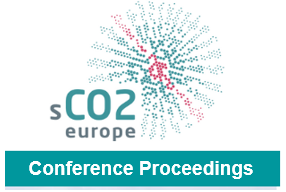Conceptual design and qualification of highly effective heat exchangers for heat removal sCO2 Brayton cycle to increase the safety of nuclear power plants
The sCO2 sCO2-4-NPP European project aims to develop an innovative technology based on supercritical CO2 (sCO2) for heat removal to improve the safety of current and future nuclear power plants.
The heat removal from the reactor core will be achieved with multiple highly compact self self-prope llant, self self-launching, and self self-sustaining cooling system modules, powered by a sCO2 Brayton cycle.
Heat exchangers are one of the key components required for advanced Brayton cycles using supercritical CO2. To this end, two compact and highly effective brazed plates and fins heat exchangers are designed:
- a main heat recovery heat exchanger (CHX), wh which allows the heat transfer directly from the steam generator to the sCO2 sCO2-4-NPP cycle,
- a heat sink exchanger (DUHS), which evacuate the remaining heat to the atmosphere.
An important work has been achieved in the frame of this project to conceive the pre liminary design of these components, in close collaboration between Fives Cryo, a French brazed plates and fins heat exchangers manufacturer, the Institut für Kernenergetik und Energiesysteme (IKE) of University of Stuttgart and KSG/GFS Institute, a simula tor center, both in Germany.
In fact, several constraints needed to be taken into account. For instance, for the DUHS, the low fans power available for the cycle and the necessary air flow for effective heat exchange implies considering almost inexisting pressure drops on the air side.
To this end, very specific design ideas has been adressed to meet the desired thermal duty.
Also, this project benefits from the recent results achieved among the european project sCO2-flex, related to the mechanical resistance of heat exchanger components, the assembly process and their thermal and hydraulic performances,
along with Fives Cryo expertise and background.
A second challenge of the sCO2-4-NPP project is to qualify the designed plates and fins heat exchangers, at cycle operating conditions, in order to meet with pressure vessels codes and regulations according to nuclear requirements.
This paper presents the work achieved on the design of DUHS heat exchanger components and a preliminary part of the qualification of this equipment according to nuclear power plants regulations.
Vorschau

Zitieren
Rechte
Nutzung und Vervielfältigung:
Dieses Werk kann unter einer Creative Commons Namensnennung 4.0 Lizenz (CC BY 4.0)
Creative Commons Namensnennung 4.0 Lizenz (CC BY 4.0)
genutzt werden.
